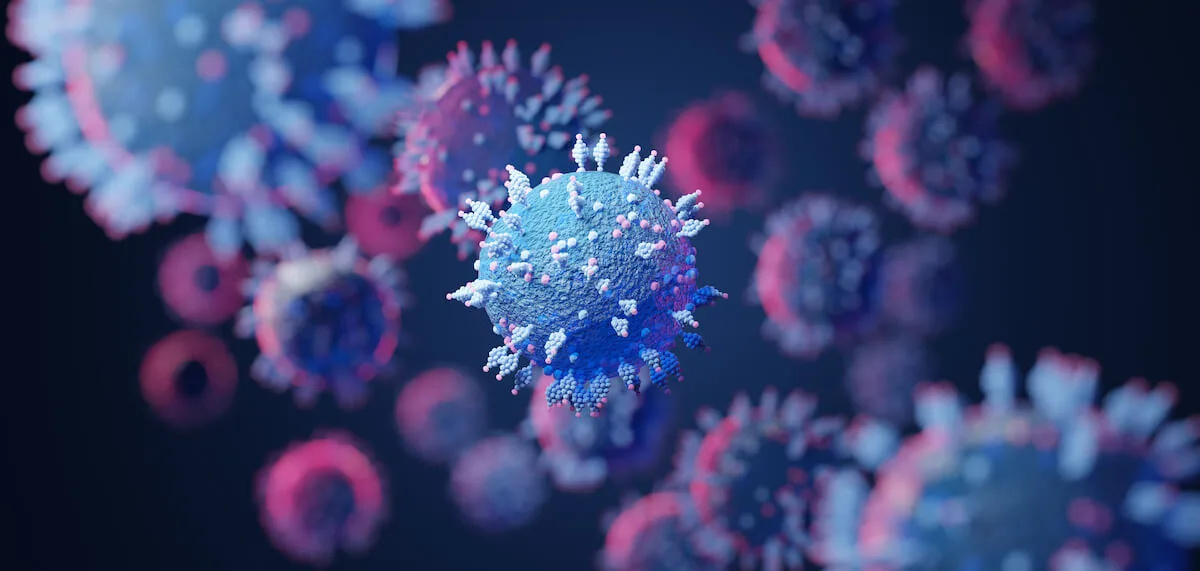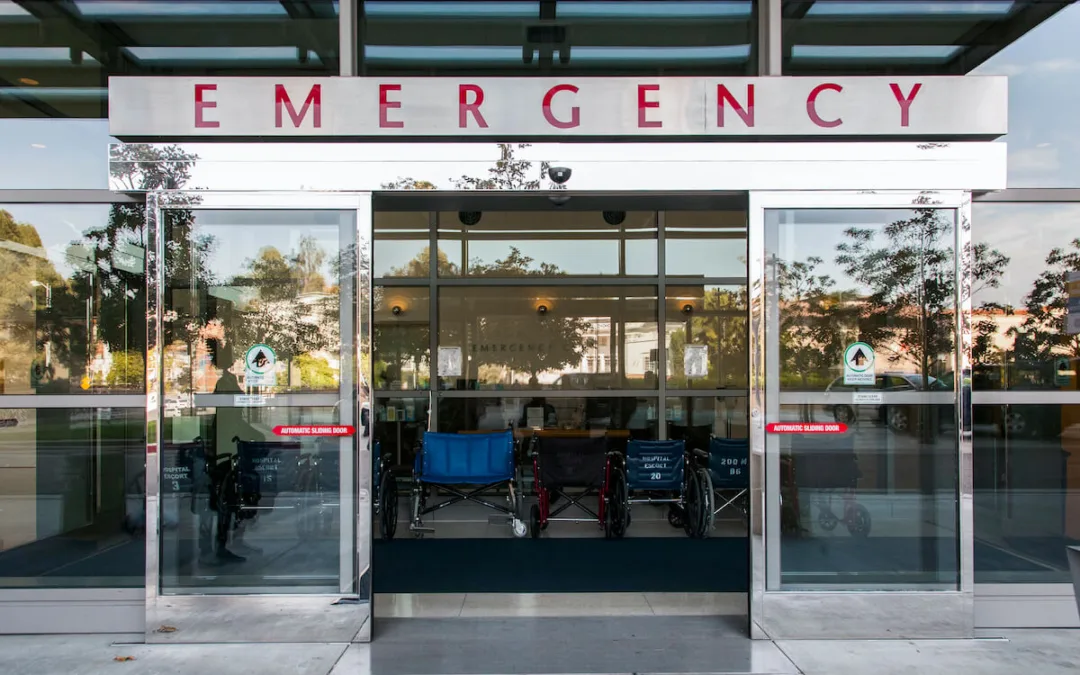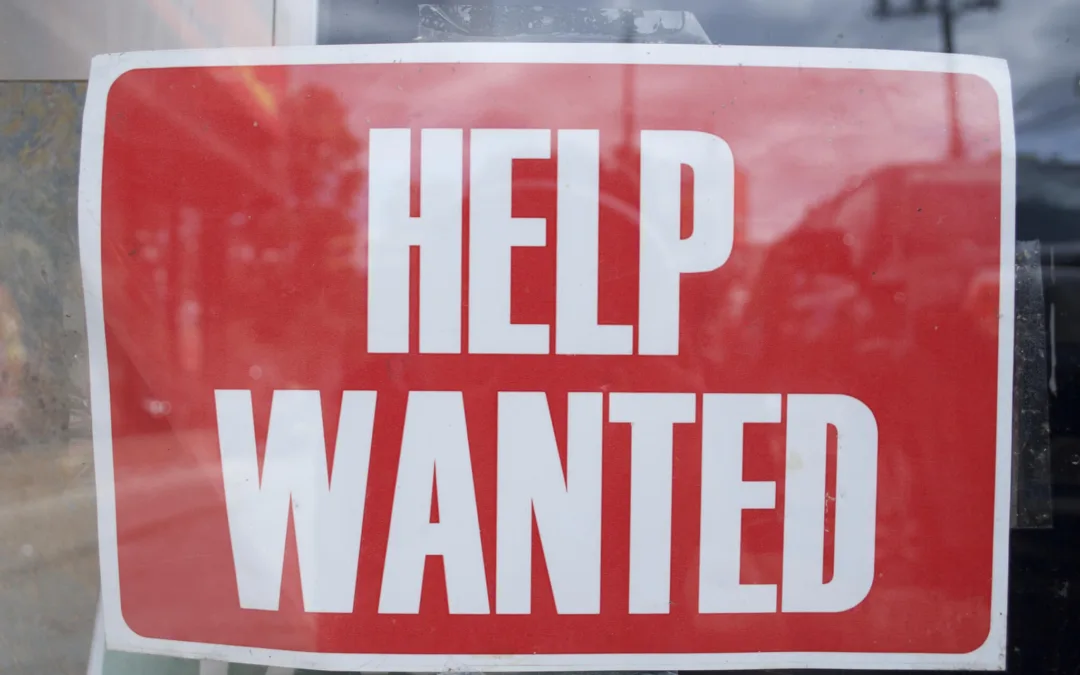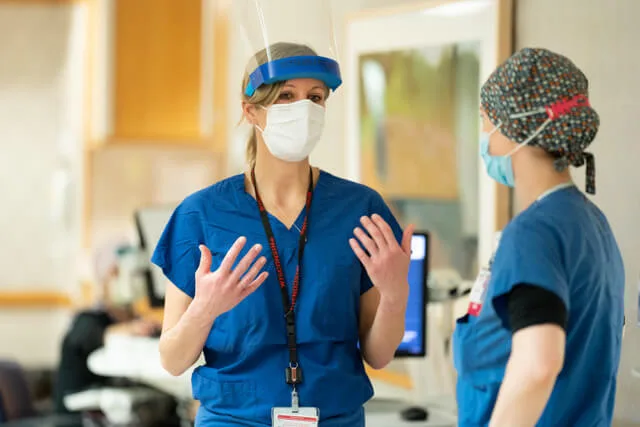
#image_title
#image_title
An “emergency” committee continues to manage resources and staffing as coronavirus cases move from a mystery to a vaccine target.
Editor’s Note: A year ago this week, COVID-19 arrived in Wisconsin and nothing has been the same since. A year later, half a million Wisconsinites have tested positive and nearly 6,000 have died of the virus. Life in health care, and in society at large, has been scrambled in ways unimaginable in January 2020.
Dr. Nasia Safdar remembers “the sinking feeling” when she took a call from the state Laboratory of Hygiene, the first week of February 2020 which began, “We don’t have good news…”
The first patient, a traveller from China who has not been publicly identified, got off the plane at Dane County Regional Airport Jan. 30, 2020, and headed directly to the University of Wisconsin Hospital emergency department. The individual believed they had likely been exposed in Beijing and was already experiencing symptoms that would soon become all too familiar to the rest of us.
Confirmation took days, however, because the testing had to be done at the Centers for Disease Control and Prevention (CDC) in Atlanta.
It was only the 12th case in the United States, so the CDC dispatched a team to Madison to interview the healthcare team and the patient, who left the hospital, quarantined, and did not pass on the virus.
“The first patient was a model patient and did all the right things,’’ Safdar said. “It could have gone in another direction. We’re just grateful it didn’t.”
Instead, that first case helped jolt hospitals and public health officials into action.
At the Wisconsin Department of Health Services, spokeswoman Jennifer Miller said her department had already begun gearing up its communications with local and tribal health departments, and waiting for test results from five other patients who were suspected cases. It issued its first press release on Jan. 27, 2020, for what was then called “the 2019 Novel Coronavirus.”
“Responding to health emergencies is something we train for constantly, and COVID-19 was the time to put that training to use,’’ Miller said. “The COVID-19 response has been all hands on deck, and not just within DHS.”
Miller said DHS’ response expanded to include the Governor’s Office, Wisconsin Emergency Management and the National Guard, the Department of Workforce Development, the Department of Public Instruction, Department of Administration, the Department of Children and Families, among others.
At UW Hospital, Dr. Jeff Pothof, UW Health’s chief quality officer, said they initially anticipated a patient or two at a time, mostly due to the number of UW students and researchers with ties to China.
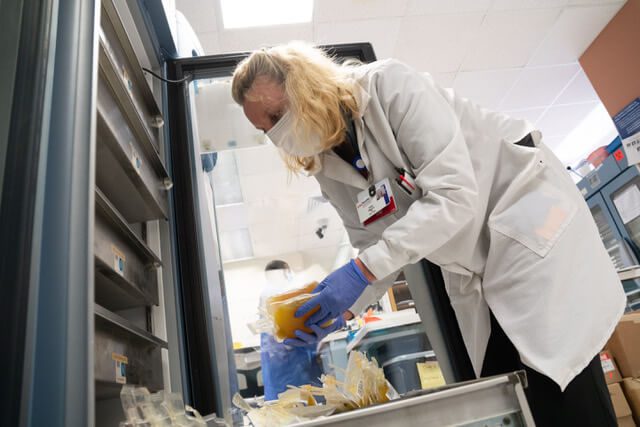
“We were just watching the headlines,’’ Pothof said. “Then the last week in February, the virus broke out in Italy. That is what really stoked us into action here. They have a robust health system in Italy, and if they had problems there, we’re going to get hit here. Then it wasn’t just a question of if it was going to become a pandemic, it was a pandemic.”
It would be mid-March before UW Hospital had its second patient. But after that, treating COVID-19 patients became a daily reality.
On the worst day, Nov. 30, 2020, 10 months after the first patient arrived from China, the three Madison UW Health hospitals had 90 COVID positive inpatients being treated in 11 units throughout the hospitals. To date, the three UW hospitals have had 941 COVID inpatients.
The hospital set up an incident command structure to respond, a group of providers and administrators that continues to meet. Such a long lifespan for an emergency group is rare, says Ric Ransom, a UW Health vice president who ran the group in the early days when it was meeting 16 hours a day. Generally, hospitals create emergency response groups for weather events such as hurricanes or mass casualty incidents, and they meet for days, not months.
“The issues that gave us the most angst have varied,’’ Ransom recalled.
In the early days, it was a shortage of PPE and a lack of laboratory supplies needed for diagnostic testing. But the group would also deal with postponing surgeries, requisitioning whole units of the hospital for COVID care, and reassigning employees, so that oncologists worked in the ICU and athletic trainers were stationed at the hospital’s front door to take temperatures and health histories. Hundreds of other employees were reassigned to staff drive-through testing sites, and are now being deployed for vaccination efforts.
In late summer, UW became a site for a trial of the AstraZeneca COVID-19 vaccine. Thirty-six volunteers received the vaccine or a placebo at UW before the trial was halted worldwide after a participant in the United Kingdom became ill. The trial resumed in late October and a total of 360 people took part in Madison. The trial is now ended, and AstraZeneca is expected to receive approval to begin distributing the vaccine within the month.
Ransom says that one of most wrenching decisions has been to ban visitors from accompanying patients to clinic visits and visiting hospitalized patients.
“Visitor restrictions have been right up there with the hardest things we’ve had to deal with,’’ he said.
For Pothoff, it was dealing with public messaging as the science continued to evolve.
“The thing that blindsided us the most was the social media around this,’’ he said. “We didn’t anticipate that opinion on social media would be interpreted as fact. We weren’t helped by different leaders who puppeted this incorrect information.”
One example is the evolving messaging on masks. Pothof said the early assumptions that COVID was only spread by coughing or by people with symptoms turned out to be wrong.
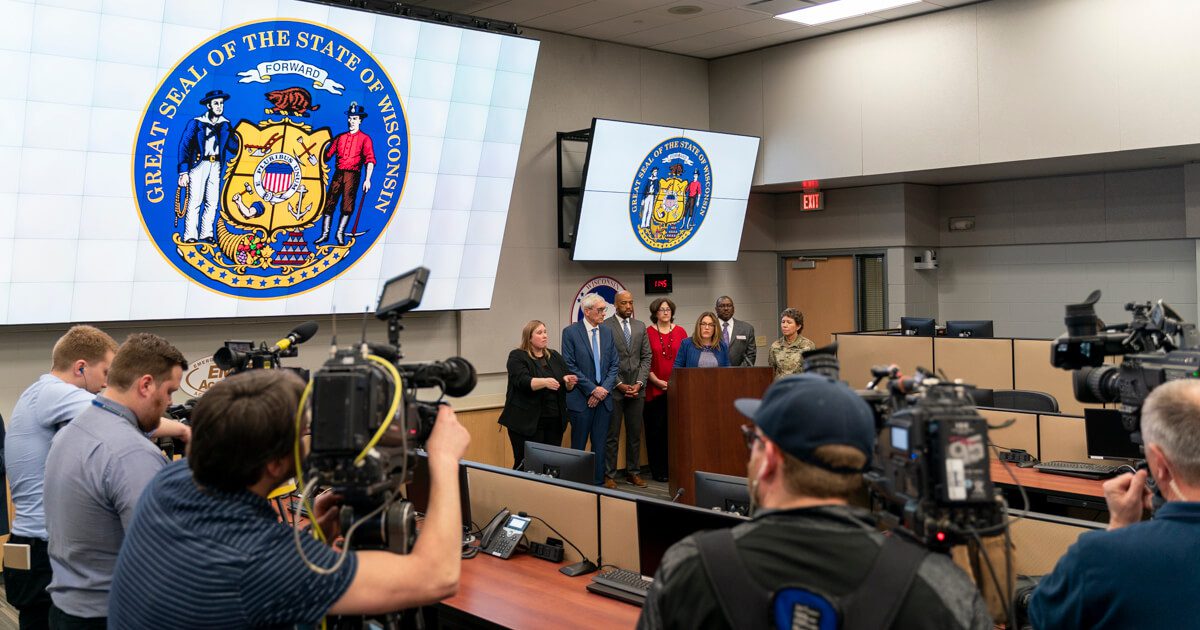
“Science when it’s happening is really messy and people aren’t exposed to that,’’ he said, adding that new studies on how COVID spread changed the recommendations about masks. “The data was changing, and we were learning about COVID.”
COVID has likely changed some aspects of health care permanently, including ushering in a new area of telemedicine and remote workplaces.
Safdar, the infectious disease specialist, says she hopes that people continue to stay home from work when they have respiratory illnesses. She also hopes that handshaking goes the way of the dinosaur.
“And I hope people are more accepting of mask wearing,’’ she said, noting that this winter’s flu season is almost nonexistent, thanks to social distancing and mask wearing. “It would be good to normalize masks, so we don’t vilify people who choose to wear a mask.”
Politics

New Biden rule protects privacy of women seeking abortions
Under the new rules, state officials and law enforcement cannot obtain medical records related to lawful reproductive health care with the goal of...

Biden marks Earth Day by announcing $7 billion in solar grants
The Biden administration on Monday announced the recipients of its Solar For All Program, a $7 billion climate program that aims to lower energy...
Local News

Stop and smell these native Wisconsin flowers this Earth Day
Spring has sprung — and here in Wisconsin, the signs are everywhere! From warmer weather and longer days to birds returning to your backyard trees....

Your guide to the 2024 Blue Ox Music Festival in Eau Claire
Eau Claire and art go hand in hand. The city is home to a multitude of sculptures, murals, and music events — including several annual showcases,...


